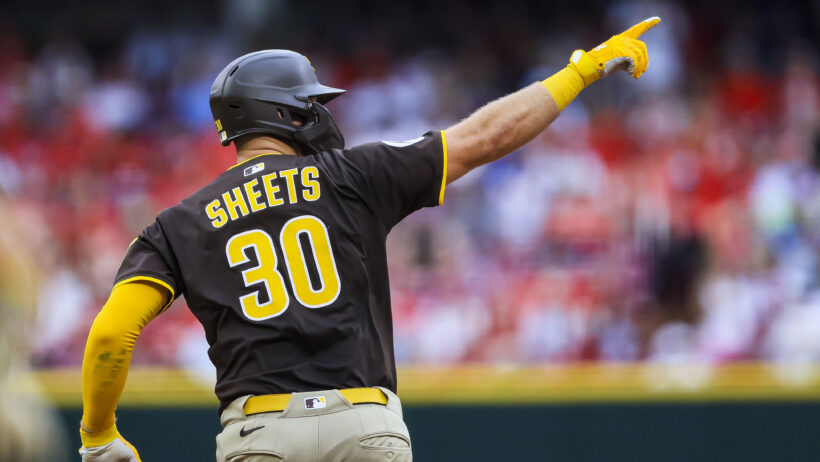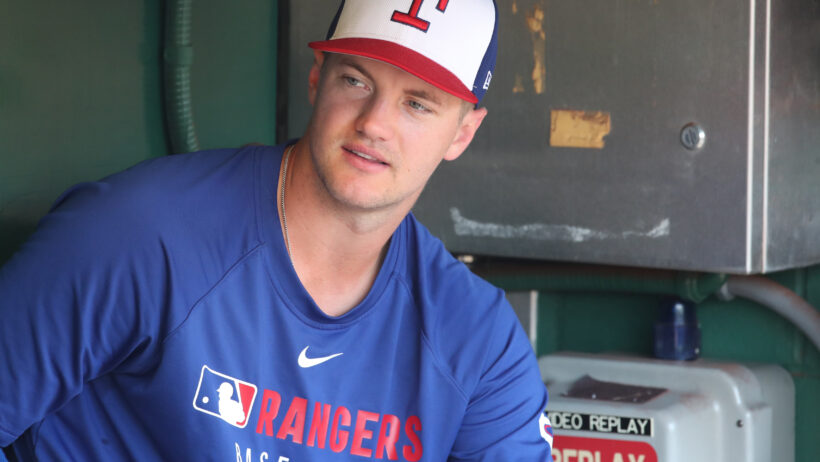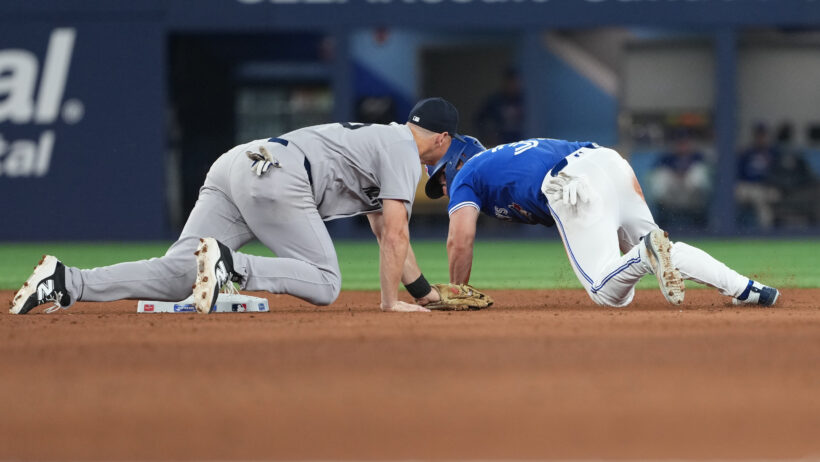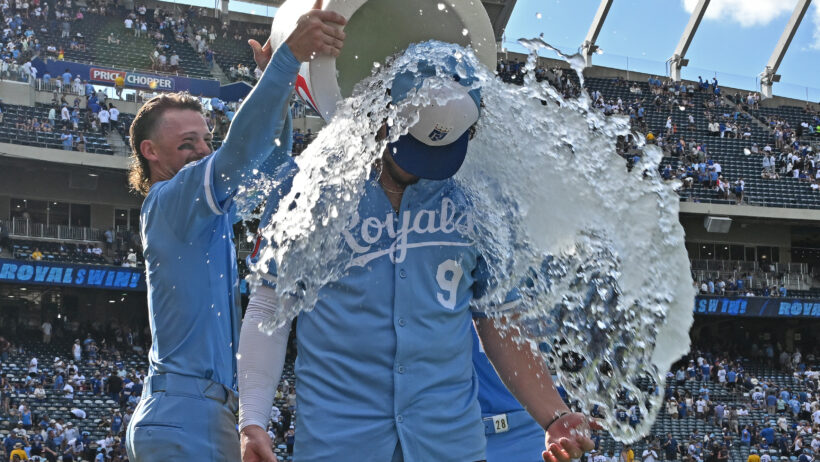MLB Public Betting Splits & Money Percentages
Public betting trends are not currently available.
We don't have public betting splits for upcoming games yet. Check back soon!
Check out MLB Baseball futures odds for now!
Latest MLB Baseball News, Picks & Analysis
By Sascha Paruk
Updated:
MLB Public Betting Splits for Tuesday, July 1st
It’s both Dinger Tuesday and Canada Day, which always includes a Blue Jays matinee (this year versus the Yankees). The notable MLB public-betting splits for July 1st include the following:
- The Cubs have the largest moneyline split today, getting 95% of ML handle as -185 home favorites against the Guardians.
- The public’s favorite run-total bet on July 1st is the over (7.5 runs) in Orioles vs Rangers, which has attracted 96% of O/U handle as of 2:06 pm ET.
- BETMGM SPORTSBOOK
USE CODE SBD1500 & GET $1,500 BACK IN BONUS BETS
- BET365 SPORTSBOOK
BET $5 & GET $150 IN BONUS BETS WITH CODE DIME365
- FANATICS SPORTSBOOK
BET & GET UP TO $1,000 IN BONUS BETS!
- DRAFTKINGS SPORTSBOOK
BET $5 & GET $150 IN BONUS BETS INSTANTLY!
- FANDUEL SPORTSBOOK
BET $5 & GET $150 IF YOUR BET WINS
- CAESARS SPORTSBOOK
USE CODE SBD2DYW & BET $1 TO DOUBLE THE WINNINGS ON YOUR FIRST 10 BETS!
Must be 21+. GAMBLING PROBLEM? Call 1-800-GAMBLER (CO, IL, KS, KY, MD, MI, NC, NJ, OH, PA, TN, VA, VT, WV, WY); (800) 327-5050 or gamblinghelplinema.org (MA); (877) 8-HOPENY (NY); 1-800-NEXT-STEP (AZ); (888) 789-7777 (CT); 1-800-BETS-OFF (IA); 1-800-9-WITH-IT (IN); mdgamblinghelp.org (MD); morethanagame.nc.gov (NC); 1800gambler.net (WV)
Public MLB Betting Record 2025
What Are MLB Public Betting Splits?
MLB public betting splits show how much money has been wagered on each side of the moneyline, runline, and run total in any given MLB game. The MLB splits at SBD are expressed as a percentage. The splits also show how many total wagers (again, as a percentage) have been put on either side of the moneyline, runline, and total.
It’s easiest to understand MLB public betting splits through examples. Assume the Chicago Cubs and St Louis Cardinals are playing at Wrigley and the Cubs are a -120 home favorite with the Cardinal a +100 road underdog. If the public has wagered $600 on the Cubs moneyline and only $400 on the Cardinals moneyline, the moneyline betting splits for that game will be 60% for the Cubs and 40% for the Cardinals.
Let’s assume the runline for that game is Cubs -1.5 (+150) / Cardinals +1.5 (-175). Unlike the moneyline, $350 has been wagered on St Louis to cover, and only $150 has been wagered on Chicago to win by multiple runs. In this case, the runline betting splits would be 30% for the Cubs and 70% for the Cardinals (because 70% of all the money bet on the runline has been wagered on STL).
In this theoretical example, the total has been set at a low 7.5 on a windy day in Chicago. Only $50 has been wagered on over 7.5 runs while $450 has been bet on the under. The run total splits in this case would be 10% for the over and 90% for the under.
How Are “% Handle” and “% Bets” Different?
The MLB betting splits table at the top of this page displays both “% Handle” and “% Bets”. The examples illustrated above all reflect the handle percentage. (“Handle” meaning the total amount of money wagered on a betting market.) But sportsbooks also track the percentage of bets wagered on those same markets.
Going back to the examples above, assume the $600 that has been wagered on the Cubs moneyline came from six wagers of $100 each. The $400 bet on the Cardinals moneyline came from just two wagers of $200. That means six out of eight total bets on this market were on the Cubs, while just two out of eight were on St Louis. The “% Bets” in this case will be 75% for Chicago and 25% for St Louis.
Why is this valuable information? Some people will infer that sharps are backing the Cardinals and novice bettors are betting on the Cubs – because sharps tend to wager more. However, that isn’t necessarily true, so use that approach with caution. The raw numbers don’t indicate who made the wagers and there are plenty of novice bettors with money to burn.
What Is “Fading the Public”?
“Fading the public” means taking the opposite side as the majority of the public. In the Cubs/Cardinals example we’ve been using, the public was backing the Cubs moneyline at a 60/40% split, the Cardinals runline at 70/30% split, and the under at a 90/10% split.
If you faded the public on those markets, you would be taking the Cardinals moneyline, Cubs runline, and the over.
In reality, “fading the public” is usually used as a betting approach when the public betting action has changed the odds.
If enough money is wagered on one side of a betting market, sportsbooks will usually shift the odds to encourage wagers on the opposite side (thus reducing their risk exposure). The run total splits in our Cubs/Cardinals example (90/10% in favor of the under) might encourage oddsmakers to drop the total to 7.0 or even 6.5.
Some bettors will take that opportunity to bet on the over. The basic theory here is that oddsmakers are good at their job and likely set the odds appropriately at the outset. They changed the odds to ensure the sportsbook is not exposed to too much risk, but this odds shift is often just a shrewd business practice, not a reflection of the oddsmakers’ opinion changing.
Of course, like all betting strategies, “fading the public” must be used with caution. Oddsmakers do not always post statistically appropriate lines, and conditions can change after odds have been released. Landslide public betting splits are often the result of significant injuries or changes in weather. Make sure you do your own research before wagering your money.
- BETMGM SPORTSBOOK
USE CODE SBD1500 & GET $1,500 BACK IN BONUS BETS
- BET365 SPORTSBOOK
BET $5 & GET $150 IN BONUS BETS WITH CODE DIME365
- FANATICS SPORTSBOOK
BET & GET UP TO $1,000 IN BONUS BETS!
- DRAFTKINGS SPORTSBOOK
BET $5 & GET $150 IN BONUS BETS INSTANTLY!
- FANDUEL SPORTSBOOK
BET $5 & GET $150 IF YOUR BET WINS
- CAESARS SPORTSBOOK
USE CODE SBD2DYW & BET $1 TO DOUBLE THE WINNINGS ON YOUR FIRST 10 BETS!
Must be 21+. GAMBLING PROBLEM? Call 1-800-GAMBLER (CO, IL, KS, KY, MD, MI, NC, NJ, OH, PA, TN, VA, VT, WV, WY); (800) 327-5050 or gamblinghelplinema.org (MA); (877) 8-HOPENY (NY); 1-800-NEXT-STEP (AZ); (888) 789-7777 (CT); 1-800-BETS-OFF (IA); 1-800-9-WITH-IT (IN); mdgamblinghelp.org (MD); morethanagame.nc.gov (NC); 1800gambler.net (WV)
MLB Public Betting FAQ
What is MLB public betting?
MLB public betting is the amount of money - and the number of wagers - that the general public has placed on MLB games that day. The statistics above show readers which teams bettors have been backing and fading.
How are MLB public betting splits calculated?
The data are provided by sportsbooks. The money percentage reflects the number of dollars bet on a certain team (or the total) relative to the other team (or the other side of the total). The bet percentage reflects how many individual wagers have been placed on the team/total. When Team A has a higher money percentage, but the Team B has a higher bet percentage, it means larger wagers have been placed on Team A.
How do sportsbooks use MLB public betting splits to adjust their odds?
There is no single answer to this and it will depend on the sportsbook and its appetite for risk. Generally, if sportsbooks are taking a ton of action on one side of an MLB line, they will adjust the odds to encourage wagering on the other side. The safest way to guarantee a profit is to have equal roughly equal betting on both teams. But if the oddsmakers are confident in their handicapping, they may not adjust the line at all. If they think the general public is overconfident in a certain team, they may be willing to take a position on the other side and let the results play out. Whether sportsbooks do/do not adjust the lines based on betting action often depends on who is making the wagers. If they are taking large bets from successful players, they will be more likely to move the odds in order to take action on the other side.
What are some of the advantages of analyzing MLB public betting splits?
MLB public betting data provide an excellent place to start your MLB betting research. If you see the percentages skewed heavily in one direction, look deeper into why. If there was a significant injury or a pitching change, then it's more likely that certain members of the public jumped on a soft line, which may no longer exist. But, if not, then the public may simply be backing a so-called public team (like the Yankees or Dodgers) and you may want to consider betting the other side and trusting the oddsmakers set the line appropriately.




